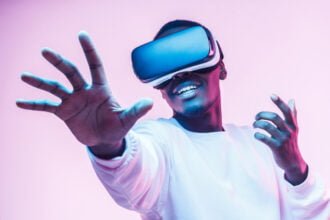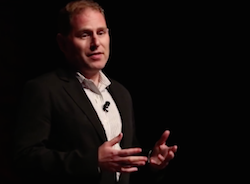The old Chinese saying, “May you live in interesting times”, is often used as a curse (and likely originated as such), since interesting is oft synonymous with challenging, uncertain, stressful or otherwise difficult. Insult or blessing, we are entering interesting times.
The coming era of development in medical technology may be the most interesting in history. Let’s get to it.
Consider the near term:
The old Chinese saying, “May you live in interesting times”, is often used as a curse (and likely originated as such), since interesting is oft synonymous with challenging, uncertain, stressful or otherwise difficult. Insult or blessing, we are entering interesting times.
The coming era of development in medical technology may be the most interesting in history. Let’s get to it.
Consider the near term:
Cost pressures, demands for improved outcomes, and need for better access to healthcare have been rising to the fore as forces overhauling markets for medical technologies.
Chronic disease has always represented a major cost challenge, given the expense of ongoing care, but as cost and quality become more demanding, while prevalence of type 2 diabetes, obesity, and associated co-morbidities increase (and compounded by higher prevalence of type 2 in an increasingly older population), driven by persistent sedentary lifestyles, diet, and other health choices, it becomes clear that chronic disease will command much attention, representing real opportunities in medtech.
Never before have so many technologies, alone or in combination, been poised to change the nature of intervention:
- bioabsorbable, bioactive, & biocompatible devices
- drug-device hybrids
- surgical innovations: sutureless surgery, natural orfice surgery, intraoperative imaging and intraoperative pathology assessment, energy-based technologies;
- information-intensive device, drug, and biotech product development
- information-intensive medical devices
- genetically-influenced drug development
In the medium term (next 5-10 years):
- Type 1 diabetes gradually becomes less burdensome, with fewer complications, and improved quality of life for patients.
- Type 2 diabetes continues to plague Western markets in particular, despite advances in diagnosis, treatment, and monitoring due to challenges in patient compliance.
- Cancer five year survival rates will dramatically increase for many cancers. The number of hits on Google searches for “cure AND cancer” will reflect this.
- Multifaceted approaches available for treatment of traumatic brain injury and spinal cord injury – encompassing exoskeletons to help retrain/rehabilitate and increase functional mobility, nerve grafting, cell/tissue therapy, and others.
- Organ/device hybrids will proliferate and become viable alternatives to transplant, or bridge-to-transplant, for pulmonary assist, kidney, liver, heart, pancreas and other organ.
- The use of stem cells for therapeutics is a radically different type of medicine, and while stem cells can be powerfully therapeutic, their use has also shown the potential to cause new cancer, graft-versus-host disease, organ damage, infection, and other direct and indirect complications. Nonetheless, the excitement around stem and other pluripotent cells creates a climate not far removed from the wild west – the potential of such open territory being up for grabs has drawn hordes of activity, not all in the best interests of patients or shareholders. The stem cell industry and others will continue to press the FDA to approve more therapies, with the pressure easing up only after a scarcity of patient deaths, complications, or just lackluster results.
Beyond 10 years, many things might happen, but which one actually happens (or the degree of its success) will be dictated by timing.
Will the big success in diabetes as we approach 2030 be cell-based — as in autogeneic pancreatic cells induced from stem cells — or will the state of the art at that time still be the “pump/meter closed loop artificial pancreas” (expected to be the case well before 2030?
Will tissue engineering allow us to preempt death?
The potential for us to preempt an enormous amount of disease is already before us, yet we studiously avoid it. At what point do we take advantage of this?
Consider what will be the case beyond 2026.
Research gaps will have narrowed drastically. The gap between basic science and clinical application will be very small. Our medical diagnostics will be extremely richly detailed, near-instantaneous, and widely accessible (e.g., there will be variants or embodiments of IBM Watson and similar intelligent diagnostic systems), which will of course optimize the potential for therapeutics. But the impact on research will be dramatic, because we will be able to much more rapidly and efficiently learn from an obvious integration of routine clinical data and research data via meta-analysis-esque (for lack of a less clumsy term) capacity to derive data from disparate local and remote systems.
Our nearly complete knowledge of the full spectrum of pathogenic factors (from environmental to genetic) and their correlation with specific patient populations will have pierced the veil that has concealed the etiologies of a large number of diseases, opening the door wide to the development of therapies.
We will understand, predict, and manage the development of genetic disease.
All political denial to the side, some of the most significant threats to our health in the future will ensue from our relentless campaign to ravage the planet’s resources – air, water, food – driven by overpopulation and happily capitalized upon by what we are seeing is a growing horde of lethal, many well evolved but otherwise persistent pathogens (from tuberculosis, MRSA, Ebola, Marburg, and many others as yet unidentified), already made more threatening due to antibiotic resistance we have knowingly facilitated.
However, fear not, my 2.3% excise tax refugees. The future is bright for you, if you care to recognize your place in it.
But first, here’s a blunt reality: Medical devices, at least as we know them, will simply become irrelevant. Medical devices, no matter how sophisticated, are clunky mechanical tools for amelioration of symptoms for diseases about which know too little to solve with near-zero cost permanent cures (think of the vaccine, an unbelievable idea in the mind of those fearing polio) but only when drugs or other interventions are not also possible.
Let there be no doubt — medical technology will thrive. Disease is persistent. Conditions are worsening for the human population. But, more importantly, at least from the sense of an industry with a big financial stake in the situation, nature does not give up her secrets easily and there remain many obstacles to overcome (not least of which is wanton and persistent human ignorance) before we are able to utterly avoid or cheaply cure all diseases.








